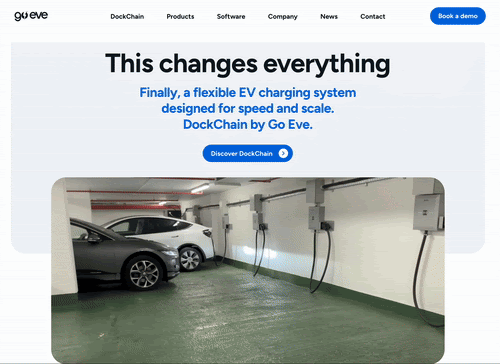Welcome back to the latest episode of “The Future of Automotive” on CBT News, where we put recent automotive and mobility news into the context of the broader themes impacting the industry.
I’m Steve Greenfield from Automotive Ventures, and I’m glad that you could join us.
Today, we’re taking a closer look at the quiet but rapidly accelerating robotaxi race — and the decisions that could shape the future of urban transportation.
Waymo, a name once synonymous with futuristic promise, is now facing a very present and practical challenge: scale.
They’ve built something people genuinely like — a self-driving taxi experience that riders say they prefer over Uber. But to meet growing demand in new cities, Waymo needs more vehicles. A lot more. And that’s where things get complicated.
Right now, the backbone of the Waymo fleet is the Jaguar I-Pace — a sleek, high-performance electric crossover. It’s elegant, quiet, and comfortable for one or two passengers. But it’s also expensive. The base model alone sells for around $70,000 in the U.S. When you factor in the autonomous hardware, estimates suggest each Waymo I-Pace could cost upwards of $150,000 — some believe even more.
That’s where the Zeekr RT comes in.
Waymo has now partnered with the Chinese automaker Zeekr to introduce what it calls the world’s first mass-produced, purpose-built robotaxi. It’s being assembled and integrated not in Shanghai — but right here in the U.S., at Waymo’s facility in Mesa, Arizona. The vehicles are already being tested on public streets.
The Zeekr RT is based on a minivan platform — the Zeekr MIX — which retails for around $40,000.
From there, Waymo adds its signature layer of autonomy tech:
- 13 RGB cameras
- 4 lidars
- 6 radars
- External speakers for passenger interaction
- And a set of self-cleaning sensor pods — critical for vehicles that could pick up passengers just 30 minutes after leaving the factory.
Waymo’s sensor suite isn’t just a technical marvel — it’s also increasingly cost-effective. Lidar, once an exotic and prohibitively expensive component, can now be sourced — or even manufactured in-house — for around $1,000 per unit, possibly less. Cameras and radars are even cheaper.
But the real expenses may lie in compute power and system integration. Analysts estimate that the compute stack could cost somewhere in the $10,000 to $14,000 range — though, as part of Google’s ecosystem, Waymo is likely getting access to its proprietary TPU hardware at a steep discount.
So how much does the whole vehicle actually cost?
Conservative estimates — compiled from industry sources and educated guesses — peg the final cost of a Zeekr RT at around $75,000 per unit, fully equipped. That’s half the price of the Jaguar-based fleet.
And here’s what that means: If Waymo is able to maintain the same revenue performance per vehicle, these new robotaxis could double its margin — or dramatically expand access by lowering prices for riders.
But there’s a catch — and it’s spelled T-E-S-L-A.
Tesla, the perennial disruptor, is now testing its own robotaxis in Austin. Early reports suggest the program is limited in scope — a tight geofence, relatively short distances between disengagements — but the ambition is clear. Tesla’s Cybercab, expected to cost as little as $20,000 to $25,000 per vehicle, could be a formidable challenger.
Unlike Waymo, Tesla doesn’t use lidar or radar. The company has bet big on computer vision — and its vertically integrated structure gives it room to slash costs even further.
Still, Waymo has the performance edge. Their vehicles average around 14,000 miles per disengagement, compared to Tesla’s roughly 500. And they’ve already launched in cities like San Francisco, Phoenix, and Los Angeles. New York City is next — perhaps the ultimate proving ground.
If Waymo’s autonomous vehicles can navigate Manhattan’s chaos — the pedestrians, the weather, the attitude — then the future is not just coming. It’s arrived.
But here’s the broader question: What happens when robotaxis become cheap?
If Waymo’s $75,000 fleet can earn enough to be profitable — and Tesla undercuts that price by half — the economics of urban transport could be upended. No driver salaries. No tips. Just point-to-point service that’s safe, clean, and — potentially — very affordable.
The implications go beyond ride-hailing. They touch on jobs, infrastructure, even city planning. Will human-driven Ubers and Lyfts survive? Will owning a car in a city make any sense at all?
For now, we wait. But we may not be waiting long.
So, with that, let’s transition to Our Companies to Watch.
Every week we highlight an interesting company in the automotive technology space to keep an eye on. If you read my weekly Intel Report, we showcase a company to watch, and we then take the opportunity here on this segment each week to share that company with you.
Today, our new company to watch is Go Eve.
Imagine a world where every parking space has EV charging.
Go Eve’s mission is to make it possible to electrify every parking spot.
Go Eve makes rapid DC charging possible for all parking spaces at virtually the same cost as slow AC charging infrastructure.
If you’d like to learn more about Go Eve, you can check them out at www.GoEve.com

So that’s it for this week’s Future of Automotive segment.
If you’re an AutoTech entrepreneur working on a solution that helps car dealerships, we want to hear from you. We are actively investing out of our DealerFund.
Don’t forget to check out my first book, “The Future of Automotive Retail,” and my new book, “The Future of Mobility”, both of which are available on Amazon.
Thanks (as always) for your ongoing support and for tuning into CBT News for this week’s Future of Automotive segment. We’ll see you next week!



